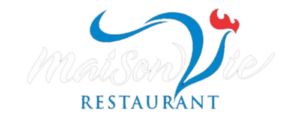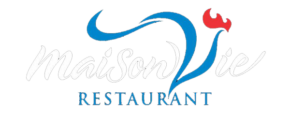
Fast food and its invasion of Vietnam’s culinary paradise
Nothing might be more different from fast food that is fast, the American manner, as opposed to the conventional Vietnamese diet.
For 7 pleased years, from 2003 to 2010, I were living on Tran Hung Dao Street, Hanoi. Right behind our stylish French villa, within a couple of blocks, there was a food paradise. The field to the south was filled with fantastic eating locations, from grand eateries to sidewalk cafes.
I loved the oceanic sample of stir fried squid, the freshness of rice paper spring rolls, the sturdiness of beef in black pepper sauce… But maybe my greatest favorite was bun cha, that we used to buy from a small joints on Le Van Huu Street, to consume at home on Sundays.
Famous chef Anthony Bourdain previously wrote: “You do not have to go searching for food that is great in Vietnam. Great food finds you. It is each time. In places, cafes, small storefronts, in the streets; carried in makeshift transportable kitchens on yokes borne by females vendors.” I wasn’t at all shocked that the small joints on Le Van Huu Street just where we used to purchase our Sunday bun cha was the location in which Anthony Bourdain got President Obama for supper.
If reality, the quality of the dishes leather may get sitting on little plastic-made stools on Vietnamese sidewalks could very easily make the offerings of several posh western eateries pale by comparison. That is the reason I experienced so disturbed when studying in a recent New York Times article which Vietnam is actually among the nations with probably the fastest penetration of food that is fast in the planet.
Among the fifty four countries viewed in the post, only Argentina discovered a speedier progress in product sales between 2010 as well as 2015. I couldn’t refrain from asking yourself whether the healthy and tasty Vietnamese cuisine I’d a great deal of enjoyed while living in Hanoi might wind up being displaced by fatty and bland fast food.
The Vietnamese craze for fast food appears to have grown to be better since this New York Times article was printed in the autumn of 2017. Youngsters queued in line for many hours to grab the hamburgers of theirs, French fries and sodas if the very first McDonald’s outlet was established in Hanoi, in December 2017. And many Vietnamese kids appear by today hopelessly fans of deep fried chicken, the Kentucky strategy.
Nothing might be more different from food that is fast, the American manner, as opposed to the conventional Vietnamese diet. food that is Fast is actually bountiful in saturated oils & industrially ready-made inputs. Vietnamese cooking, on the additional hand, depends on healthy ingredients, with little use of oil and dairy, and a great deal of vegetables and herbs. Everything is new in Vietnamese cuisine, nearly nothing is in food that is fast.
While Vietnamese cuisine is actually considered one of probably the healthiest worldwide, fast food is actually a worldwide tool of obesity. And obesity is really ballooning in Vietnam. Based on Professor Le Thi Hop of the National Nutrition Institute, aproximatelly 1.2 million kids already suffer from it. In HCMC, the share of kids that are obese increased from 3.7 % in the season 2000 to 11.5 % in 2013. The share is possibly greater today.
By now the paradox is actually obvious: Vietnam is actually a nation of superbly slim moms with regrettably obese kids. And Dr. Huynh Hanh, of the Faculty of British Columbia, thinks that the opening of take out chains is actually a significant because of this disturbing trend.
There’s another reason to be worried about the penetration of food that is fast in Vietnam.
Food is actually culture, and it’s commonly said that there’s no good civilization without a fantastic cuisine. Obviously, the cuisines most individuals have in mind are actually the French, the Chinese, the Turkish, the Indian… But Vietnamese cuisine is arguably in this top tier of the world foods league. And one of the fantastic cuisines of the planet being displaced by bland take out would undoubtedly volume to a loss for humanity.
Vietnamese cuisine requires a subtle mixture of fragrance, color and taste. 5 elements come together & balance each other: sweet, salty, bitter, sour, and spicy. The sophistication of their combos was pressed to brand new heights under the Nguyen Dynasty, when the fifty greatest chefs from all around the kingdom had been selected to deliver the emperor.
Later on arrived the French influences, from brand new components such as asparagus and potato, to brand new dishes including banh mi pate or perhaps banh xeo. Pho, the quintessential Hanoian meal, was arguably affected by French onion soup, and the title is actually believed to derive from container au feu, a standard French broth.
In the eyes of mine, the cuisine of Vietnam is a lot superior to that of its neighbors: very spicy towards the west, very complicated towards the north, very heavy towards the east…
Alas, the possibility of watching Vietnamese cuisine actually being displaced by manufacturing take out might look rather real at times. By several accounts, there are by now 207 Lotteria retailers, 140 from KFC as well as hundred stores by Jollibee. Some other chains are actually following suit, and therefore are hugely investing to type in the Vietnamese foods industry.
And yet, the concerns of mine might well be overstated. Several of the western fast food chains are actually struggling. Burger King invested forty dolars million to grow the chain of its, though it’s nonetheless grappling to get a foothold in Vietnam. McDonald’s had targeted hundred restaurants after ten years in the land, though it also has just a couple of in HCMC, along with only one in Hanoi. Several of the profitable entrants in the take out industry are actually Japanese and korean, and their offerings are much more appropriate to the eating habits of the Vietnamese, with grain as the key staple.
Meanwhile, people that are young in Vietnam still like food that is local. Market analysis firm Decision Lab reckons that the development created in the 1990s collectively usually spends about VND13 trillion ($568.1 million) per month eating out. For many young Vietnamese males and females, monthly spending reaches VND2 3 million. These younger people consume gooey rice, fried corn, baked banana… as well as pho, of course! They consume mango shake, whole milk tea as well as Vietnamese coffee. What about continuing the tradition of the elders of theirs, they make Vietnam the worldwide capital of “real” fast food, in its sidewalk model.
Even among western countries, food fashion can be quite different. food that is Fast, the American manner, appears to have taken over the world, but in parallel a potent “slow food” motion has emerged. Founded in Italy in the 1980s, in response to the arrival of take out chains, it encourages the use of new ingredients, from farm to dining room table, as well as celebrates taking some time to prepare as well as share the food with friends and family. The 2000s saw the growth of the worldwide chain Eataly (from “Italy” and “eat”), where big food halls host a bunch of small restaurants as well as counters advertising ham, cheese, coconut oil along with other natural ingredients. Looking as market locations, Eataly retailers are actually flourishing, from Sao Paulo to London and from New York to Tokyo.
The historical past of some reassurance is provided by Vietnam. The country was exposed by french colonialism to western influences for the very first time. Unlike the present opening up of the nation to overseas trade as well as investment, globalization before was imposed. And yet, the Vietnamese way of life was robust enough to solely digest the very best that western civilization had to provide. From the new poetry campaign to the Romanized Quốc Ngữ program, from neo impressionist paintings to the ao dai suit, probably the finest French influences and regional traditions had been mixed back then to create what we today discover as distinctly Vietnamese cultural programs.
Food is actually culture also, and depending on the country’s last experience with globalization, it’s tough to think that oily, American style fast food has a lot future in Vietnam.
*Martin Rama is actually the chief economist for the South Asia region of the World Bank. The views expressed are his very own.


